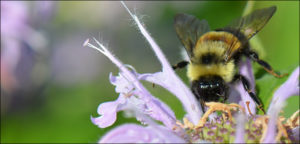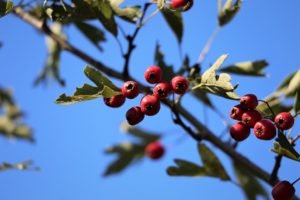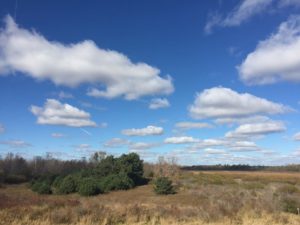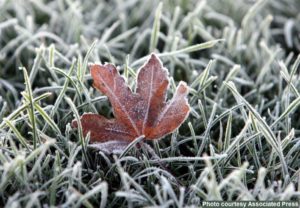Last week I glanced at some bird feeders hoping to spot a fox sparrow or northern flicker that had been hanging around. Instead, beneath some nearby apple trees there were two does and a large buck (about a 12-pointer as they say) grazing on the lawn. The does were intent on finding the last fallen, mushy apples but occasionally glanced back at the buck, as if wanting to know where he was and what he was up to. The buck seemed not as interested in the apples as one would expect this time of year. They were interesting to watch, even for someone who at present is not among the blaze orange legion.
White-tailed deer and their ancestors have been a part of the wildlife landscape for millions of years- about four million according to some researchers. Their range extends from southern Canada south through Mexico and Central America to northern South America. Although they tolerate cold conditions, they are also able to withstand very warm temperatures, and are able to adapt to a variety of conditions. They are ruminants, and have four-chambered stomachs which provide sanctuary for the bacteria which help them digest the cellulose in the plants they consume. They feed on legumes and grasses, and in this climate browse on leaves and twigs, the latter helping them survive the winter. Over the course of a year, a deer consumes about a ton of vegetation. At Woodland Dunes, a lot of that is twigs of red-osier dogwood, about 8 pounds per day in the winter. Their adaptability is apparent if one watches them in summer, as they stroll along sampling all sorts of different leaves – from tulips to vegetables from the garden to leaves of black walnut trees, oaks and maples, even poison ivy.
A lot of the vegetation they prefer grows at the edges of forests, where shrubs and small trees find a lot of light and produce leaves down to the ground. Mature forests in large tracts don’t have as many edges, but people have fragmented forests around here and have created far more edge habitat than existed before. We’ve also planted nutritious crops that help them. And we tend not to tolerate predators of deer like wolves or coyotes, wanting deer for ourselves instead. The result is that hunters are the major source of deer mortality at about 320,000 animals, with vehicles responsible for another 20,000 (Wisconsin ranks 4th in the US in car-deer collisions, and your odds of hitting one are about 1 in 72). There are still estimated to be another million additional deer in the State. In comparison, there are about 5.8 million people, and 3.3 million cows in Wisconsin.
Even with a mortality of 340,000 deer, they are considered a species of least concern as far as overall population goes. Where you find more than 20 deer per square mile they can cause serious problems for native plants. For that reason Woodland Dunes has a managed deer hunt each fall, and if you visit you will find that some of the trails, those away from our headquarters, are closed for a while. These trails are posted. Please do not use them while in gun season for your own safety. This deer management is the only hunting that is allowed on our preserve, and a permit from Woodland Dunes is required. All permits have already been issued for this year. Those hunting without a permit are considered to be trespassing. We are not a hunting club, and we are neither for or against hunting. It is a management tool for us when deer are more numerous than they should be for the health of the ecosystem and all the other plants and animals. While we try to manage our deer herd intelligently, the Wisconsin DNR has the enormous task of not only trying to determine appropriate herd sizes across many different areas and trying to keep people of many different interests happy in the process. Woodland Dunes participates in the DMAP program and works with DNR biologists and foresters to gauge the status of our deer. A deer’s ability to adapt to changes in their environment is amazing, and they will probably always be a part of our local ecosystem. Right now deer are mating and if the winter is again mild, many does will have two and sometimes three fawns at their side come early summer. And mild winters seem to be normal now.
Deer are plentiful and add enjoyment to our outdoor experience whether we hunt or just like to watch them. The fall deer hunt is an old and important tradition in Wisconsin that brings families together, builds awareness of the outdoors and provides opportunities for education about nature. It is also a way to manage one animal species that can affect many others. Plus, they certainly make looking out the window more interesting.




